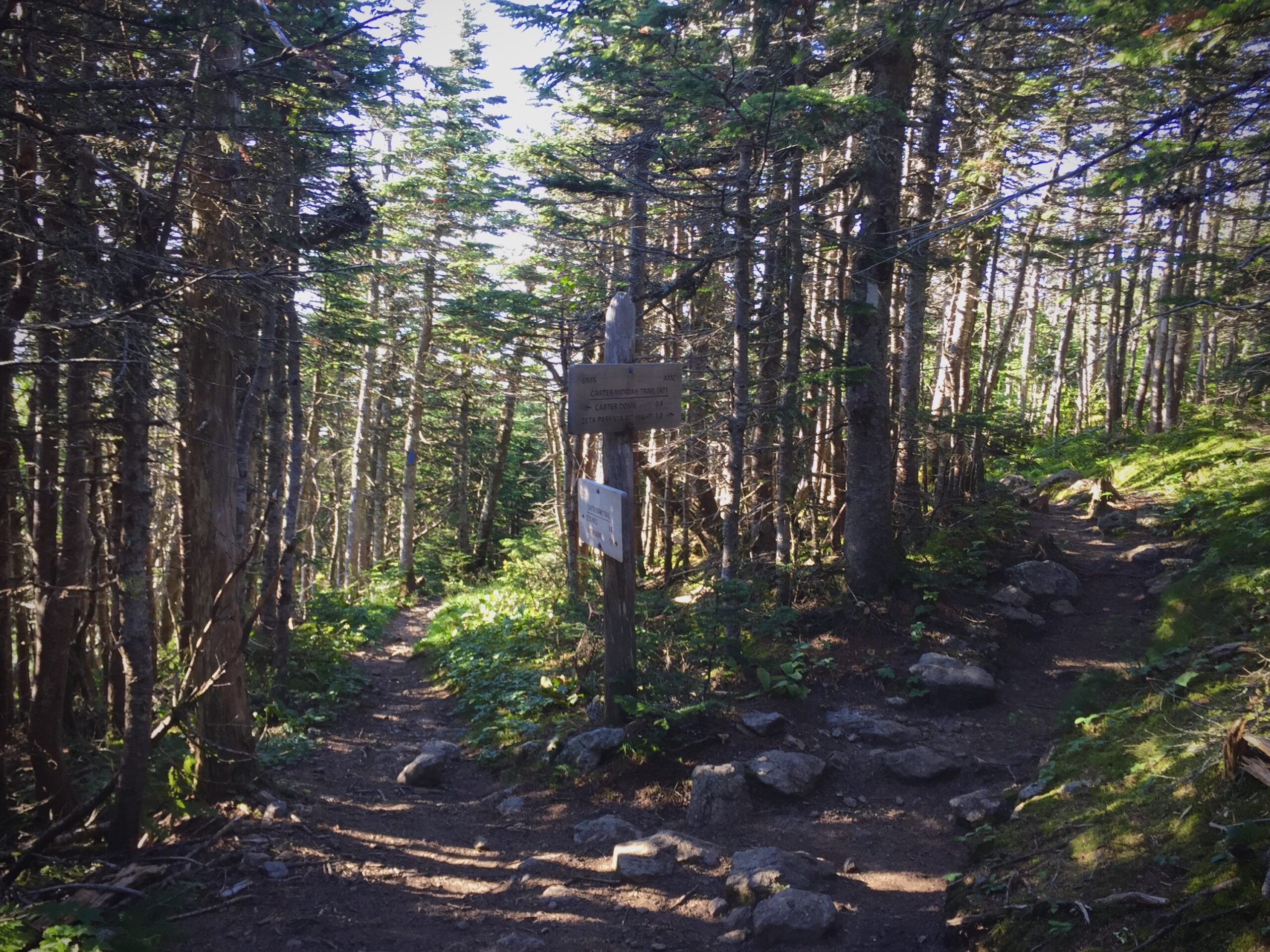This weekend found me backpacking in the Carter-Moriah range in the northern part of the White Mountain National Forest, following the Appalachian Trail most of the way.
We started up the trail on Friday night, and set up our tent at the Rattle River shelter just as it was getting dark. The only other person staying at the shelter was a southbound AT hiker, who we chatted with until the stroke of Hiker Midnight when we retreated to our tent.
Saturday morning arrived overcast and cool. Reasons number one and two why I’m a bad outdoor blogger are that I didn’t take a picture of the shelter before we headed out (5/5– would tent there again!) and that I was grateful for the cloud cover because we had ~12 miles and ~3500 feet (net) of elevation gain ahead of us for the day. Bluebird skies and blazing sunshine are great for photos, but sunburn and dehydration are not so great for backpackers.
While I didn’t take a picture of the shelter, I did take a picture of the Rattle River just beside the shelter site (I like stripey rocks!)
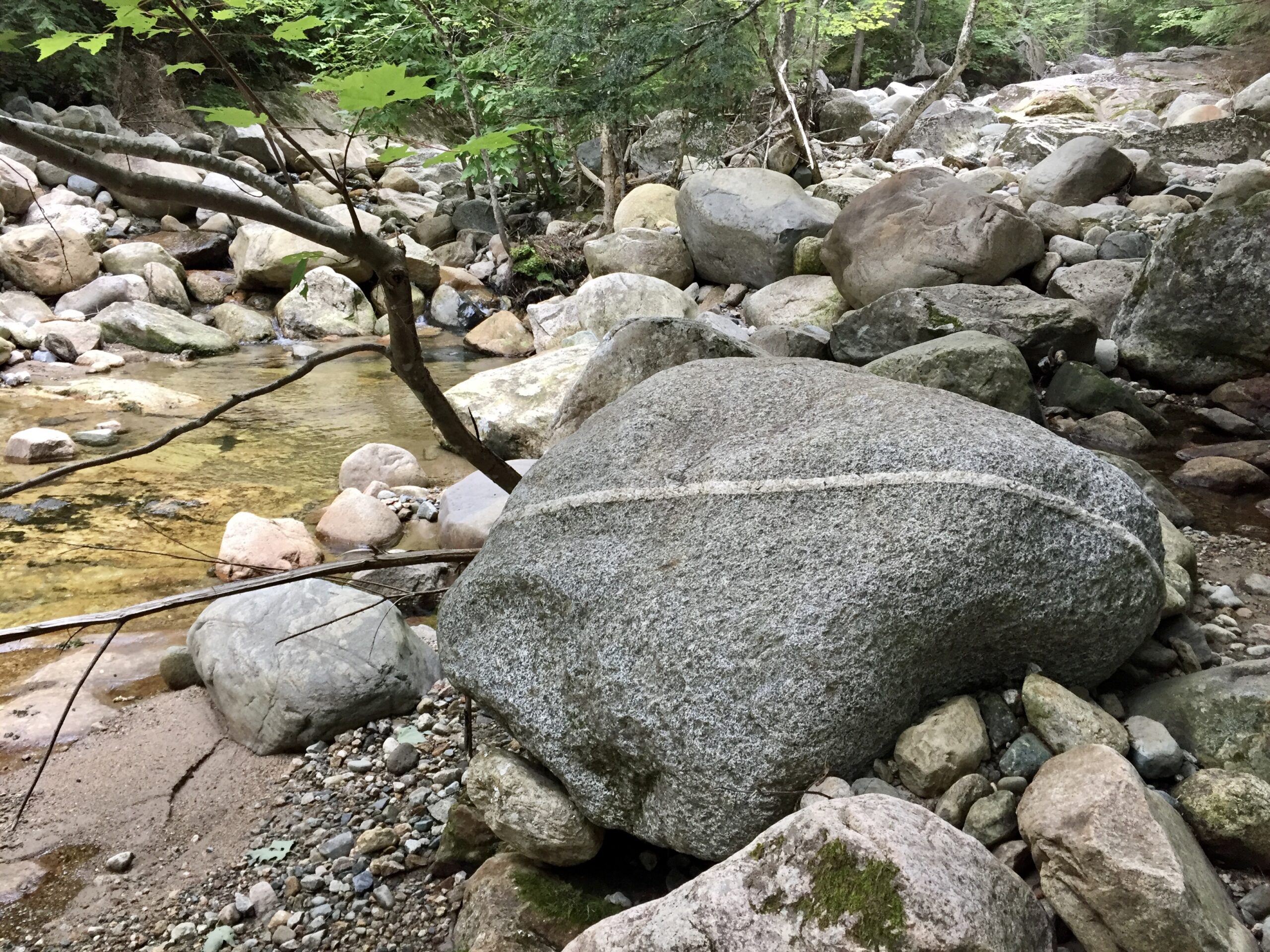
The summit of Mt. Moriah is described in the guidebook1 as having “abundant views from open ledges and a near 360-degree panorama at the top”. I’ll have to take this description on trust, because the summit of Moriah was in the bottom of the cloud deck, and within 50 feet everything faded into the fog. Reason three why I’m a bad blogger is that I didn’t try to take an artistic picture of the misty landscape. I tagged the summit, stopped to admire a spiderweb beaded with water droplets (didn’t take a picture of that either), and moved on.
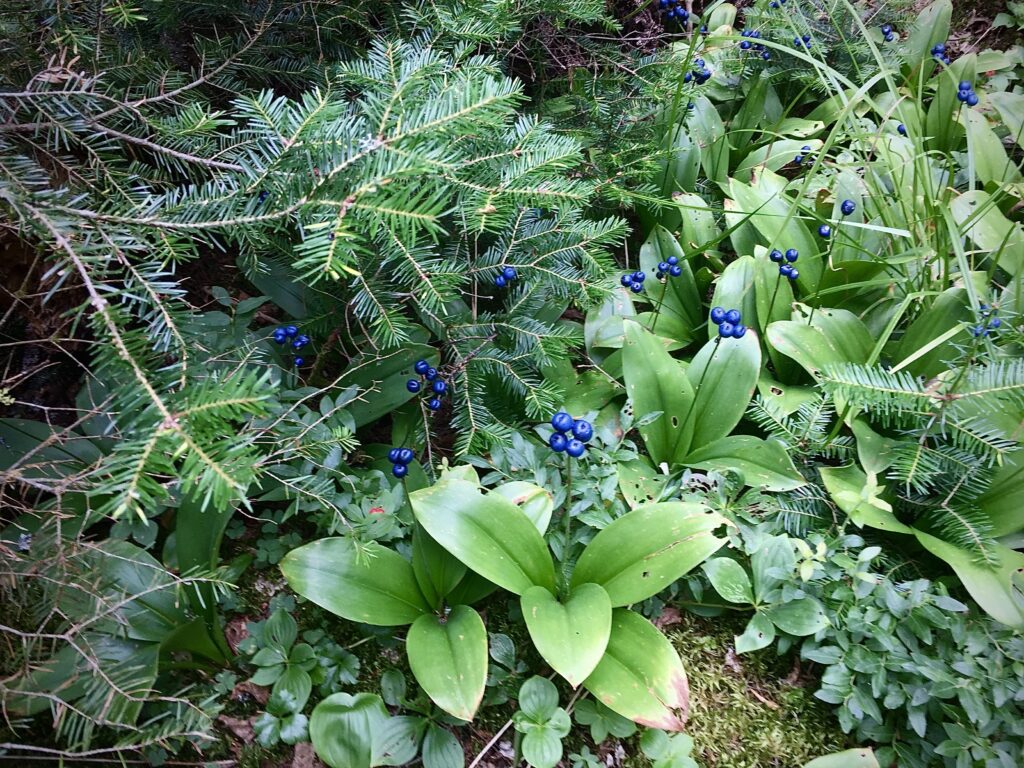
In the Spring and Summer I took a lot of pictures of wildflowers. As Fall approaches and the flowers give way to fruit, the name bluebead lily makes much more sense.
Reason number four why I’m a bad blogger is that I didn’t even try to capture the most haunting landscapes I saw through the day. I stopped on the bog bridges that crossed mist-filled clearings carpeted with vibrant moss, but didn’t take a picture. I paused on exposed ledges to watch the clouds flow through a notch below me, and didn’t take a picture. A brief glimmer of sunlight illuminated a distant hillside, and I didn’t take a picture.

As the day went on, the clouds broke up. Late in the day we climbed on weary legs out of Zeta Pass to the summit of Mt. Height. We considered passing it by using the Carter Dome trail, but that would have taken us off the AT, which we’d followed all day, and to quote the guidebook1 once again, Mt. Height “has probably the best view of any summit on the E. side of Pinkham Notch”. The book was right.
Reason number five: we camped on the top of Carter Dome and I didn’t take a single picture. Not of the summit itself, not of cooking dinner on the slab left behind from the fire tower next to the surveyor’s benchmark, not of our tent set up to catch the last rays of the setting sun, and also not of where we actually set up our tent.
There’s no water on top of Carter Dome, so we made a dry camp and used the last of our water to make dinner and brush teeth. Our plan was to hike down into Carter Notch first thing in the morning to refill water and make breakfast at Carter Notch Hut.
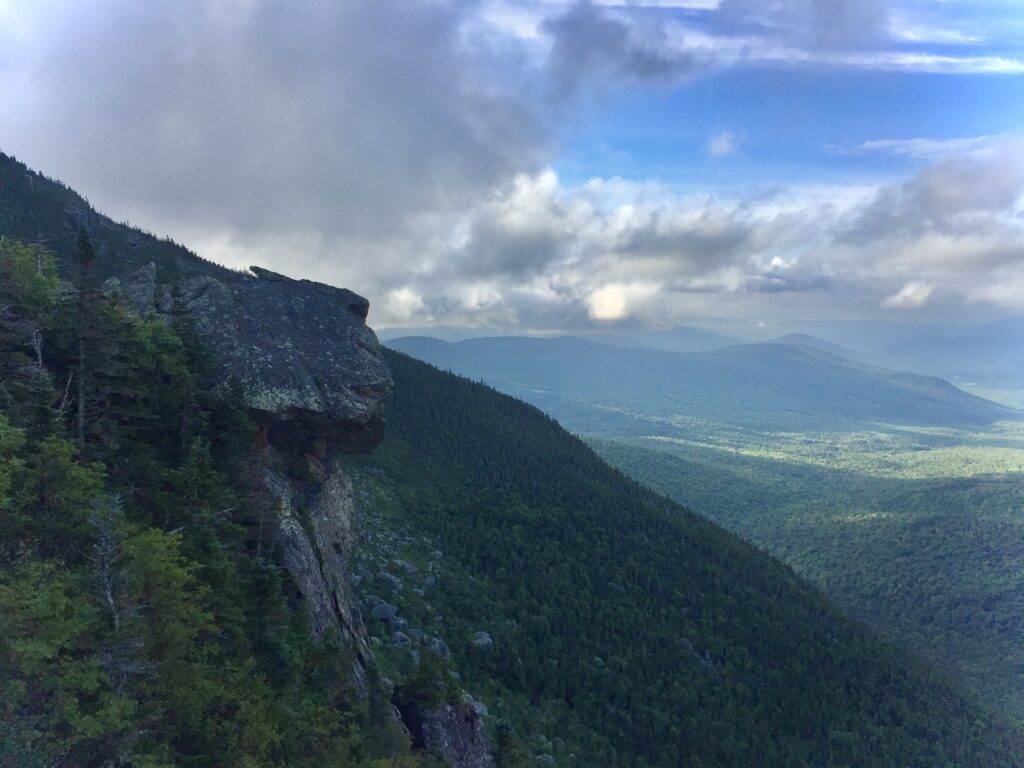
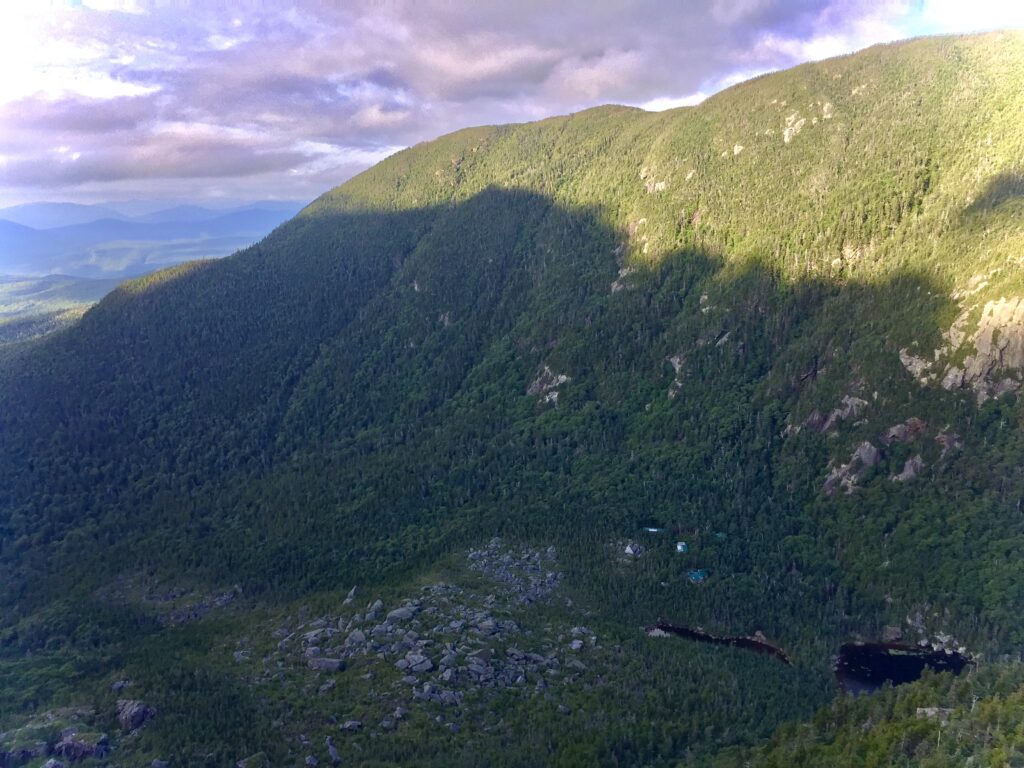
Just below the summit, a side trail peels off a few yards to a lookout into the Wild River Wilderness and Carter Notch. The boulders shed from Carter Dome and Wildcat Mountain pepper the floor of the notch. Look for the huts for relative scale.
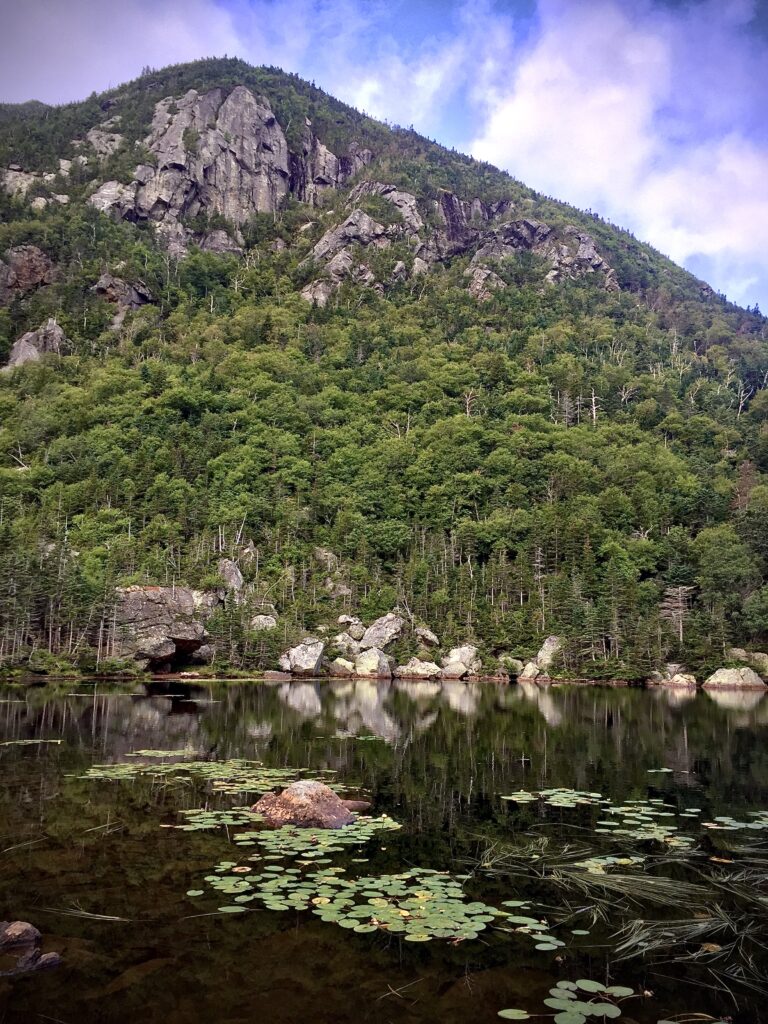
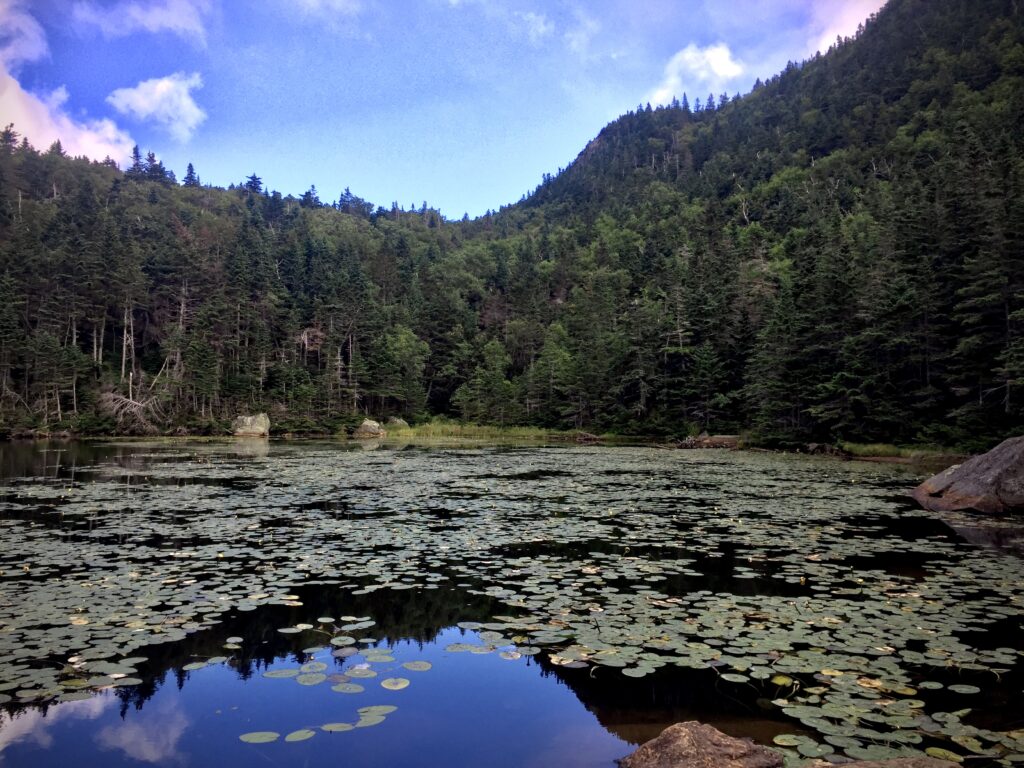
The final reason I’m a bad blogger is that the last pictures I took are of the small tarn in Carter Notch with a peaceful mat of water lilies despite Wildcat Mountain looming above. I didn’t photograph the hut (quaint, stone, circa 1918) or the truly magnificent breakfast burrito made by the caretaker, or the hike along 19 mile brook that took us back to the road.
I don’t regret being a bad blogger, and I don’t regret the pictures I don’t take. When I find myself in vacant or in pensive mood, what flashes upon my inward eye are the long moments I stood in the bog clearing under a fleeting ray of sunshine, or the unexpected scent of pancake syrup wafting through the forest, or the feeling of wind lifting my hair as I step out of the trees onto the summit, or the hawk that circled the summit and soared away without a single wing beat. Then my heart with gladness fills to rival even a Romantic Poet.
1 Stephen D. Smith and Mike Dickerman, The 4000-footers of the White Mountains A Guide and History, Bondcliff Books, 2017 (updated edition)

